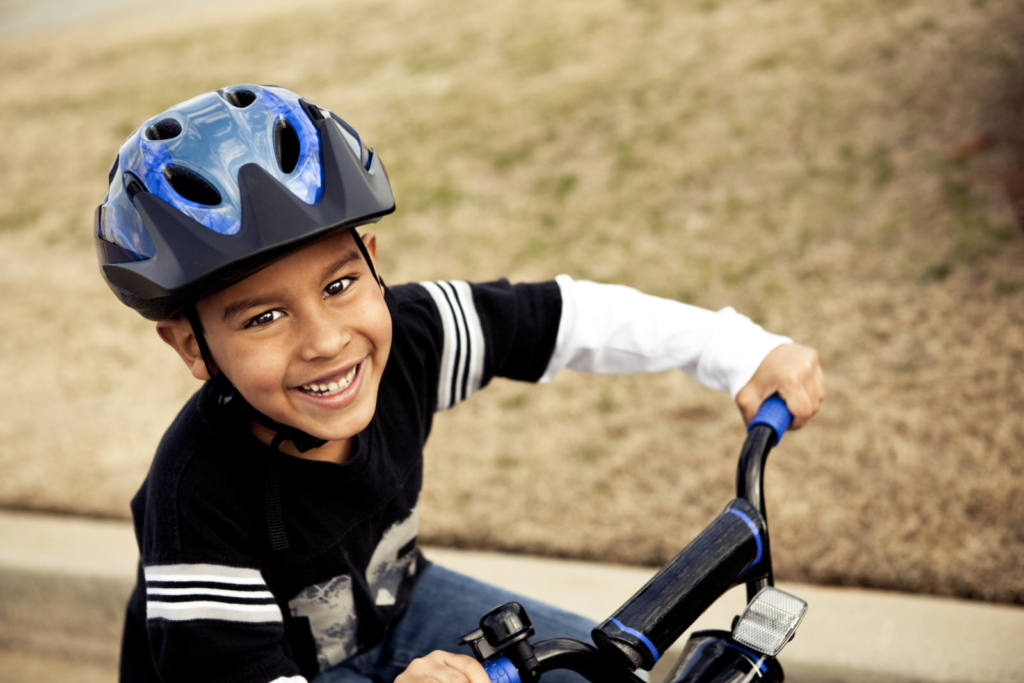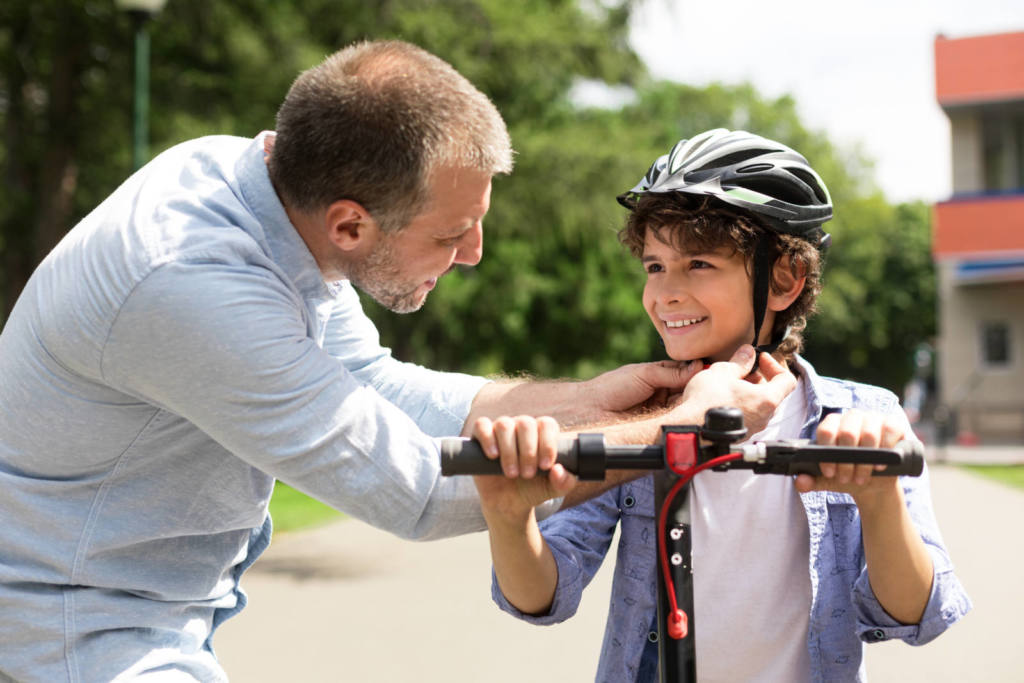Let the outdoor festivities and activities begin! Now is the perfect time to get your little ones walking and rolling to school. If your child likes to ride their own wheels to school, let’s make sure they don’t leave the house without their trusty headgear.

“Wearing a bike helmet reduces the risk of head injuries by at least 45%”
Wearing a helmet while riding a bike, scooter, or skateboard is the best way to protect your most vital organ, your brain. During our Beat the Street assemblies, we teach students about the importance of wearing the right gear to protect themselves. We encourage everyone in attendance to wear a helmet because it can reduce the risk of serious head injuries. According to Primary Children’s Hospital, each year, more than 1,200 people lose their lives in bicycle, roller blade, scooter and skateboard accidents – many of these deaths could have been prevented by wearing a helmet correctly. Taking less than a minute to put on a helmet and protect yourself can change your life forever. The Children’s Hospital Los Angeles found that wearing a bike helmet reduces the risk of head injuries by at least 45%. Helmets work.
As a parent or caregiver, it is important to set the example. Children pick up on everything we do. If they see us not wearing a helmet, they may feel like they don’t need to wear one either. Create a rule that everyone has to wear a helmet before using a motorcycle, bicycle, scooter, skateboard, or anything with wheels: No Helmet, No Ride.

The Children’s Hospital Los Angeles has a great analogy for teaching kids to wear helmets. Living in a digital age, you might find it difficult to convince your child to wear a helmet, so use logic they can understand. They suggest talking technology. Pull out your phone, most likely it will have a case protecting it. Ask your child why we put cases on our phones. What is it protecting and why? If we protect the little computers we carry around in our pockets, why wouldn’t we protect the computer in our head?
March is Brain Injury Awareness month and helmets help prevent brain injuries for people of all ages. Remember, a helmet works best when worn correctly. The helmet should:
– fit snug on the head, like wearing a pair of shoes – not too tight or loose
– not move from side to side or front to back, and remain buckled with movement
– left and right side straps should form a “V” around each ear
– have enough room for one finger to fit under the chin strap
– have enough room for two fingers to fit between the eyebrows and helmet
– be tight enough for the helmet not to fall off, and loose enough to talk comfortably
Check out our post on picking the right size bike and helmet to learn more about correct fits.
Remember, if your child walks or bikes to school or to the bus stop, they can enter our Walk & Roll Challenge. We pick monthly winners that will get a sweet bike or scooter along with a helmet so they can protect their noggin in style. So, dust off your helmet because warmer weather is finally here.
